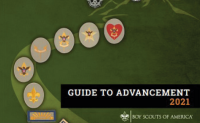 A friend sent me the link to an article on the website of the American Association of Retired Persons (AARP) titled 10 Skills Our Kids Will Never Learn. It’s a rundown on skills that those of the Baby Boomer generation have come to take for granted but which today’s youth view as useless or otherwise irrelevant, thanks to technology, societal changes or a shift in our education system. There’s not much call for making buggy whips any more, but what about these skills?
A friend sent me the link to an article on the website of the American Association of Retired Persons (AARP) titled 10 Skills Our Kids Will Never Learn. It’s a rundown on skills that those of the Baby Boomer generation have come to take for granted but which today’s youth view as useless or otherwise irrelevant, thanks to technology, societal changes or a shift in our education system. There’s not much call for making buggy whips any more, but what about these skills?
As a Boomer and the parent of two Millennials, I can see their point and have seen some of these in my own kids. But the skills in the article are far from obsolete. Rather, they are great things to know that could come in handy when you least expect it.
From a Scouting perspective, it means Being Prepared – for there are times when your smartphone’s battery runs flat, or you need to figure something out that can’t be looked up on Wikipedia or YouTube.
Just for fun, let’s look at some of the supposedly obsolete skills, how Scouting manages to teach them to our young people anyway, and why it matters.
- How to read a map: Today’s kids don’t need maps – or so they think. They have Google Maps or Waze with turn-by-turn directions. Just enter the address and follow the voice prompts. But what happens when your phone dies, your data plan runs out, or you find yourself outside cell coverage? Having a map – and knowing how to use it – can be a lifesaver. So much so, in fact, that it’s a requirement for Second Class to be able to orient a map, and use a map and compass to navigate a five-mile hike.
- How to do simple crafts: A staple of every Cub Scout den activity and day camp program is making things out of everyday objects. What den leader doesn’t have a ready supply of popsicle sticks, glue, scissors and markers to improvise an activity when the need arises? We routinely go on hikes, pick up and identify fallen leaves, and make Pinewood Derby cars. We do it because it’s fun, but because it teaches creativity, resourcefulness and coordination. Boy Scouts make useful camp gadgets out of sticks and ropes.
- How to send things through the mail: While e-mail and other forms of electronic communication have taken over, our Scouts still are asked to write letters to the newspaper editor or their representatives. True, many of these are now best done by e-mail, but there’s one rank – Eagle Scout – where the Scout must write to important people asking for letters of recommendation. He may even need to mail his Eagle Scout rank application.
- How to folk dance: Dancing isn’t a central part of our program, but the ceremony teams in our Order of the Arrow lodges still perform folk dances as part of their service to units. It’s also something that can be explored through the many opportunities to learn about heritage.
- How to plant vegetables by the phase of the moon: The article admits that there’s no science behind the folklore, but Cub Scouts learn to grow something (we’ve all had our sons bring home paper cups filled with dirt and planted with bean seeds), and there’s the Gardening merit badge that covers growing a variety of plants from seed and caring for them.
- How to balance a checkbook: Once a must for transacting financial business, checks are very nearly obsolete. I’ve gone from writing several hundred checks a year to no more than a couple dozen. Still, bank accounts remain a fact of life, and it’s necessary to keep track of how much money we have. The Personal Management merit badge helps our Scouts learn about money, budgeting and banking and helps to prepare them to make decisions about expenses and financial management.
- How to make change in their heads: We give them this opportunity every time a package of popcorn or ticket to a pancake breakfast is sold. It’s a skill that’s useful not only when working our fundraisers but serves as a double-check when they buy something from a cashier who can’t make change in his head.
- How to drive a car with manual transmission: Okay, we don’t teach our Scouts how to drive, and while today’s cars make it unlikely that they’ll ever need to drive a stick, the Automotive Maintenance merit badge covers the difference between automatic and manual transmissions as well as the fluids that are used in each. And a thoughtful and enterprising (and brave) counselor just might let them try driving a car with a clutch, or at least show them how it’s done.
Obsolete? Not so fast! Our Scouts not only can do these things but can see their relevance and usefulness.
This post first appeared on Bobwhite Blather.



